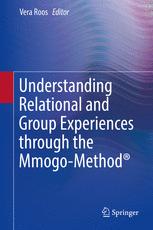

Most ebook files are in PDF format, so you can easily read them using various software such as Foxit Reader or directly on the Google Chrome browser.
Some ebook files are released by publishers in other formats such as .awz, .mobi, .epub, .fb2, etc. You may need to install specific software to read these formats on mobile/PC, such as Calibre.
Please read the tutorial at this link: https://ebookbell.com/faq
We offer FREE conversion to the popular formats you request; however, this may take some time. Therefore, right after payment, please email us, and we will try to provide the service as quickly as possible.
For some exceptional file formats or broken links (if any), please refrain from opening any disputes. Instead, email us first, and we will try to assist within a maximum of 6 hours.
EbookBell Team

0.0
0 reviewsThis volume describes the development and application of the Mmogo-method® as a projective visual data-gathering method, applied in different contexts and with different groups of people. "Mmogo" means togetherness in Setswana, one of the 11 official languages of South Africa. The Mmogo-method® provides a deep understanding of personal, relational and group experiences and is particularly useful in cross-cultural contexts and across age groups. By allowing visual expressions of the self as a complex, dynamic social system it overcomes some of the limitations of traditional data-collection methods, such as questionnaires or interviews. The book draws together contributions by leading social scientists to show how this flexible, visual data-collection method can be used independently or jointly with other data-gathering techniques, such as journalling or in-depth interviewing, to acquire rich information. The research method described here enables investigators to access perceptions, feelings and personal experiences participants might otherwise find hard to verbalize and explain. Researchers in disciplines such as education, social sciences, consumer sciences, market research, and city and town planning will find this book and its innovative method particularly valuable in addressing a gap in available visual and other data collection resources.